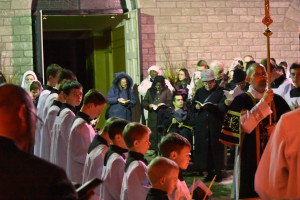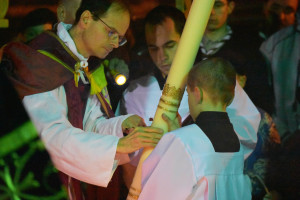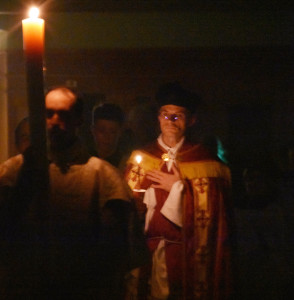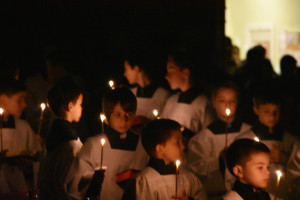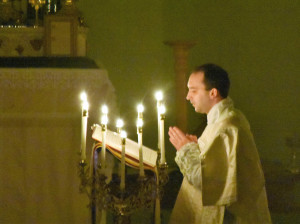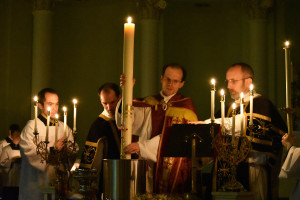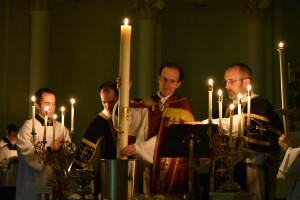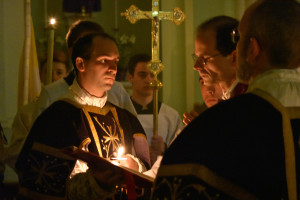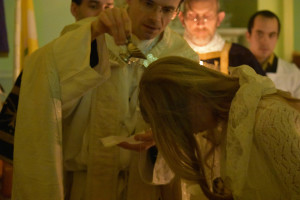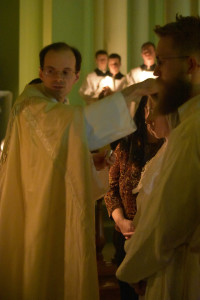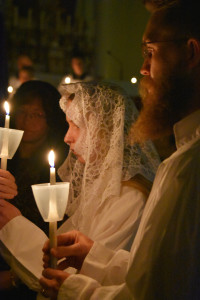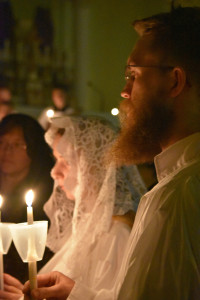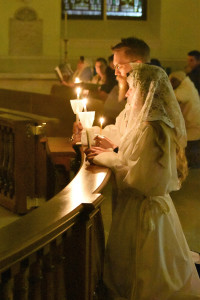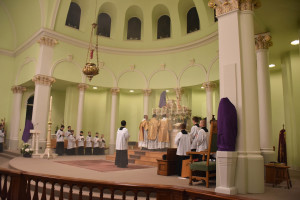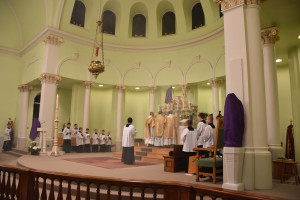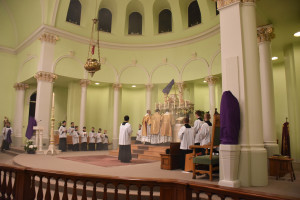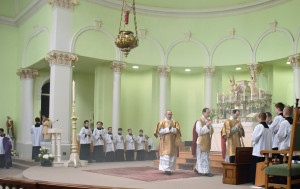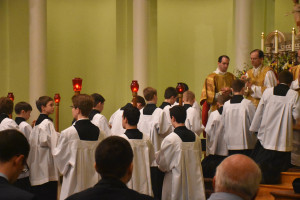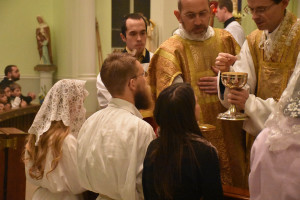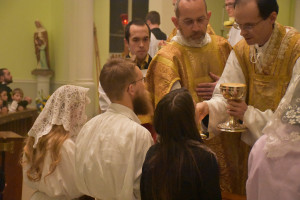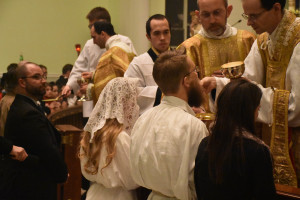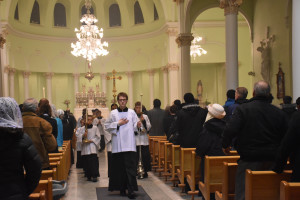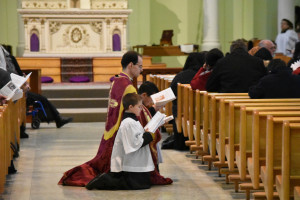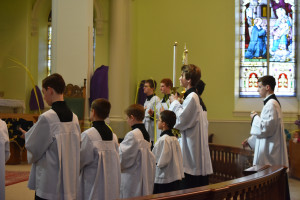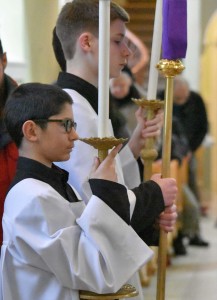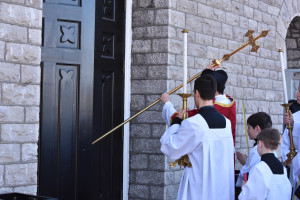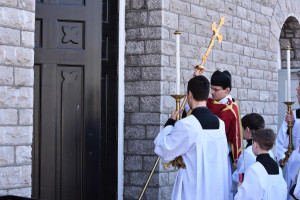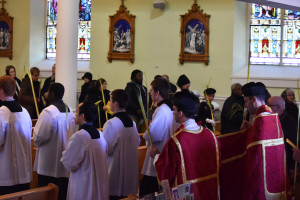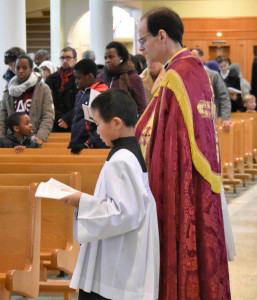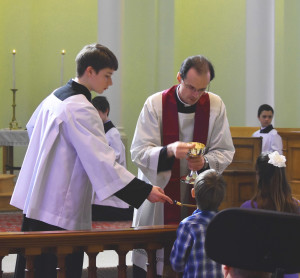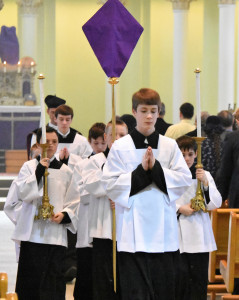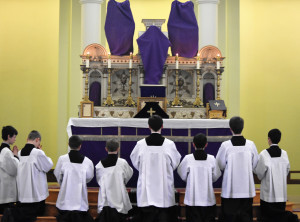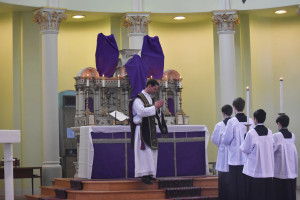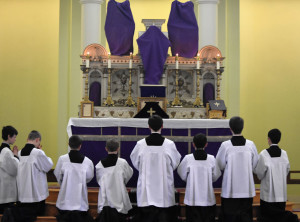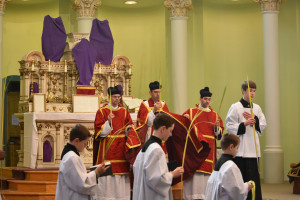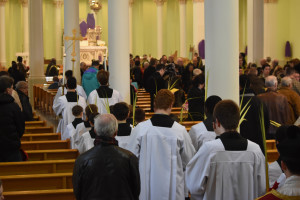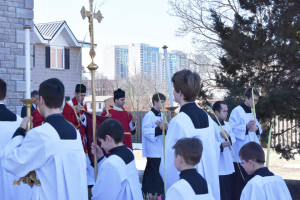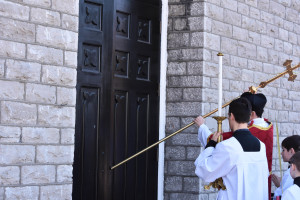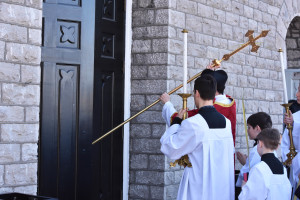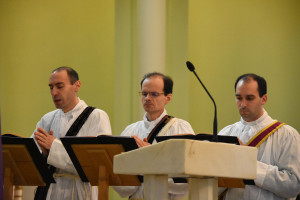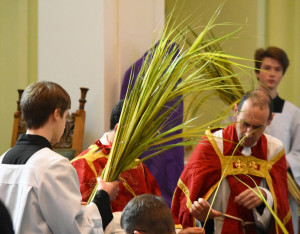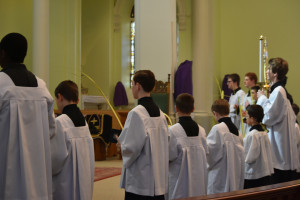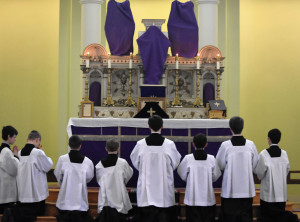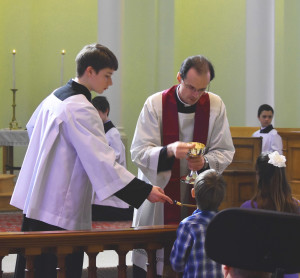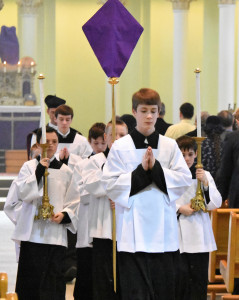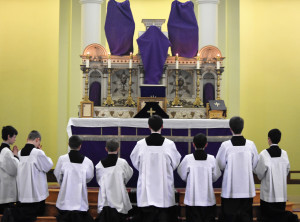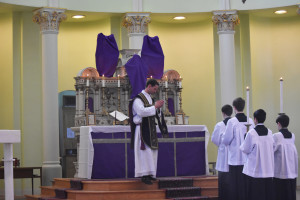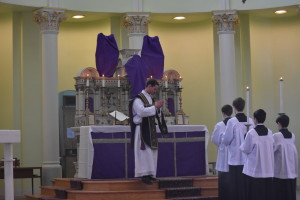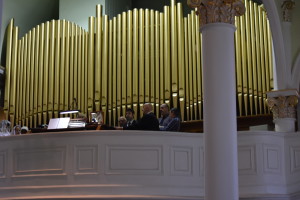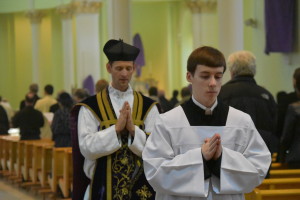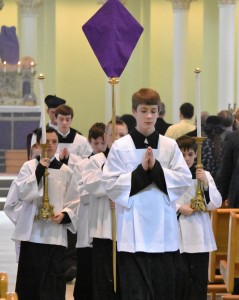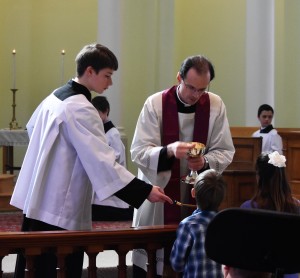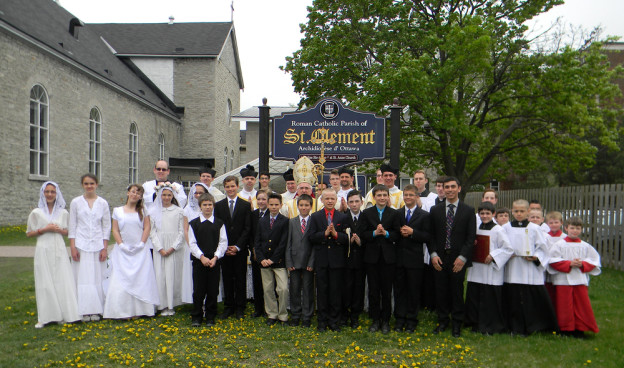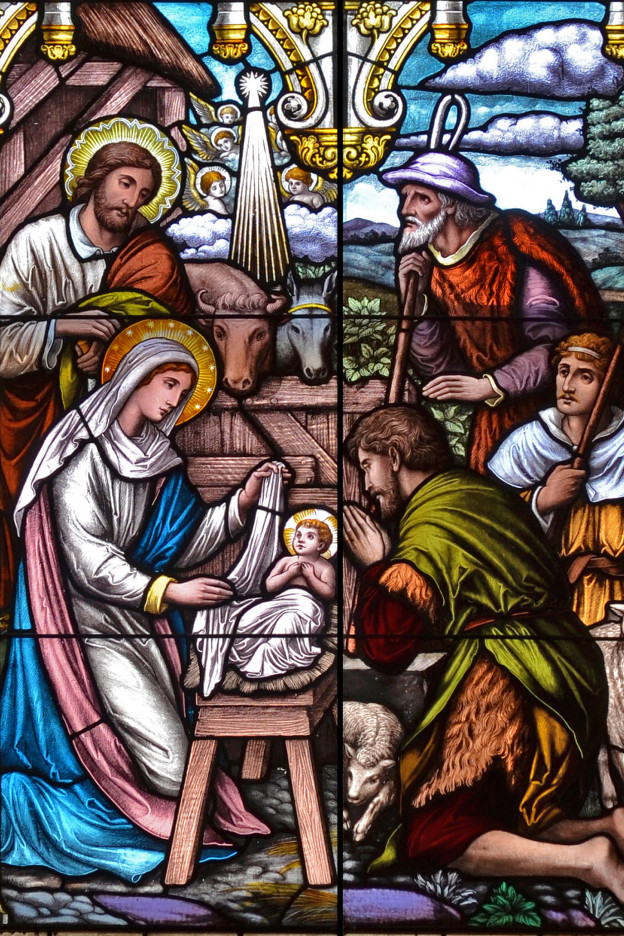








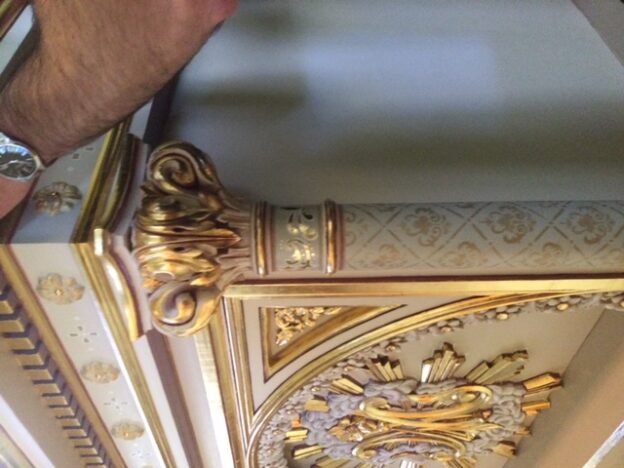
Newly restored, Our Lady’s Altar was returned to its place in the sanctuary last week.
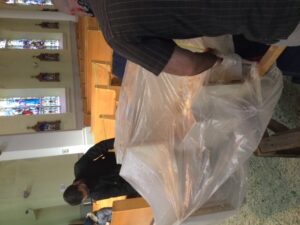
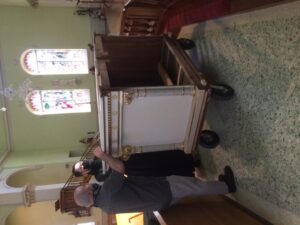
Having all three of its altars restored to their former state has been the fervent desire of many of the faithful and their priests ever since the nascent parish of Saint Clement acquired them in 1984 and thus saved them from certain destruction.
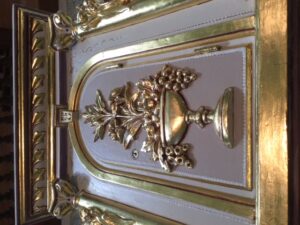
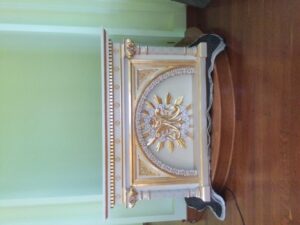
Parishioner generosity has made possible the realization of many prayers by ensuring a very successful Side Altar Restoration Campaign. As of the end of December 2020, parishioners had contributed $29,345.00 to the project involving this second side altar which was budgeted at $24,800 (plus applicable taxes). The additional funds received will be directed to other sanctuary restoration work.
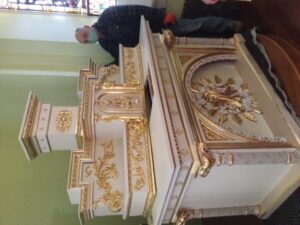
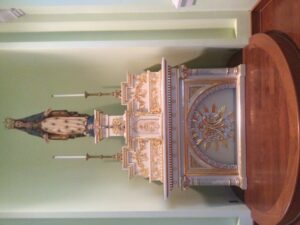
The work to restore the side altars was undertaken by Atelier Plantagenêt who in 2019, carried out the restorative treatment of the high altar.
Thank you for your generosity!



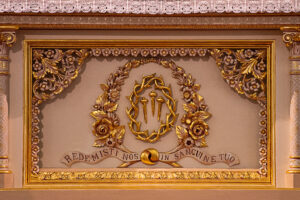

Restorations by their very nature sometimes reserve discoveries that are both unexpected and impossible to fully explain.
Such is the case with the restoration of one of Saint Clement’s side altars. Work being carried out on the altar dedicated to Saint Joseph has uncovered an early ex voto offering hidden behind the fabric lining tabernacle when it was removed for cleaning. How and why it came to be there is a mystery.
The ex voto consists of a donor card in gold lettering signed “Donné par L. Joseph Fauteux Ecr” and is accompanied by a heart-shaped silver votive medal surrounded by palm branches carrying the inscription “Sister Anne Marie, November 13th 1916.”

We don’t know the identities of either Joseph Fauteux or Sister Anne Marie and it is unlikely that we ever will. What we can be sure of however is that the votive offering was so important to Mr. Fauteux that he took pains to ensure that the card identifying him as the donor was done in gold lettering embellished with scroll work before placing it where, together with the silver memento carrying Sister Anne Marie’s name, it would be next to Our Lord in His tabernacle.
If Sister Anne Marie’s identity, like Mr. Fauteux’s, is unknown, so too is the significance of the date of November 13th, 1916. Was it her date of birth or that of her death? Was it perhaps the date the young woman entered religious life? We simply don’t know. All we know is that over one hundred years ago, both objects were entrusted to the safekeeping of Saint Joseph and carefully placed out of sight in the tabernacle.
The saint will continue to watch over them for once the restoration is complete, the votive offering will remain attached to his altar, enclosed in a secure frame accompanied by an explanatory note documenting its discovery.
The Via Crucis – commonly known as the Way of the Cross – is a devotional exercise which allows the faithful to retrace the stations or events surrounding the Passion of Our Lord and to meditate upon their profound meaning. The fourteen stations illustrating particular events along the Way up to Calvary formerly varied considerably in number at different times and places until the eighteenth century when the devotion’s definitive form was established by popes Clement (1731) and Benedict XIV (1741). Today the Stations of the Cross are to be found in almost every church and chapel around the world. The scenes making up the Stations beginning with the Condemnation of Jesus and ending with the Placing of His Body in the Tomb are set at intervals around the church interior. As the faithful move from one to another of the stations along the “road” the fourteen are meant to recall, they follow the outlines of the church’s exterior form. In a sense then, the Via Crucis itself represents the entirety of the material symbols making up the individual “stations”.
The new Limoges Way of the Cross now installed in the nave constitutes a work of art. Very finely executed, each scene of the Via Crucis is painted in monochrome tones of grey against a blue background and laid down on enameled copper in a technique whose preliminary steps involve embossing a copper sheet to produce a convex surface able to resist successive firings which is in turn hammered to further enhance its rigidity. The composition is created by superimposing successive layers of enamel, each one applied and fired separately, beginning with the colours most resistant to the highest temperatures. The Via Crucis scenes were executed in France, possibly at Limoges, where the ancient technique of decorative enameling enjoyed a renaissance in the second half of the nineteenth century and the series produced under patent issued to the Parisian firm located in the Saint Sulpice quarter owned by Lucien Chovet who specialized in painting, gilding, bronze casting and the production of church ornaments. It has thus far been impossible to identify the individual artists responsible for the realistic scenes depicted by the Via Crucis. Each scene is surrounded by a niche-shaped frame of carved oak, stained, gilded and crowned with a cross. The 1889 gift to their chapel by members of the Congrégation de Saint-Roch de Québec, the Stations of the Cross were installed on January 10th 1890. In honour of the Congrégation’s fiftieth anniversary, their chapel was elevated to a church in 1901 and given the name Notre-Dame-de-Jacques-Cartier. A reorganization of Québec City parishes resulted in the church being closed in 2012. We are honoured to have been gifted such a fine example of the Via Crucis by the Council of the Fabrique of Notre-Dame de Saint-Roch. Contemporary with the period when Saint Anne Church was built, it complements the church’s interior superbly, inspires meditation and advantageously replaces the plaster castings formerly in place which had been substantially altered during renovations carried out in the church’s interior in 1967 when their frames were removed and white paint applied to them.
The installation of this superb Via Crucis represents the first important step in the restoration of the original dignity of Saint Anne Church, and its conformity to the liturgical requirements of the Extraordinary Form of the Catholic Liturgy.
– René Villeneuve, July 2014
 |
 |
|---|---|
 |
 |
 |
 |
 |
 |
 |
 |
 |
 |
 |
 |
Photos: Jean-Claude Grant
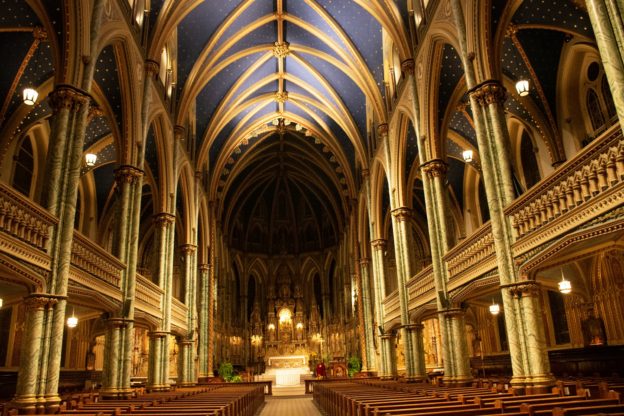
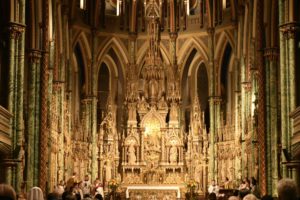
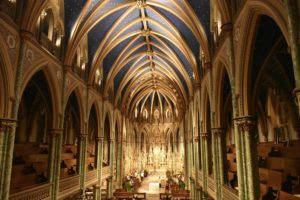
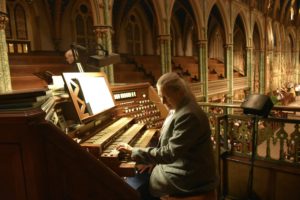
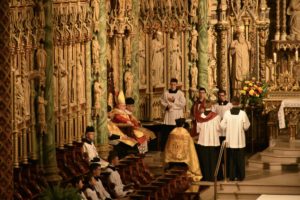
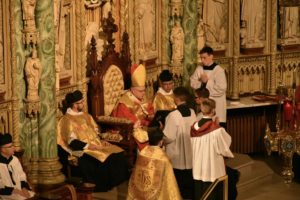
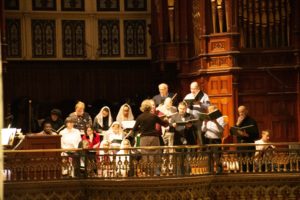
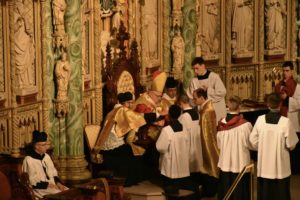
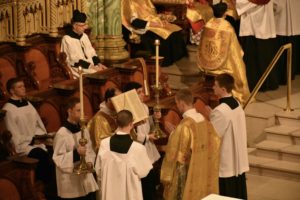
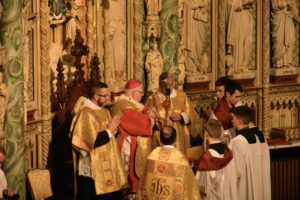
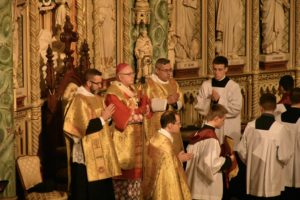
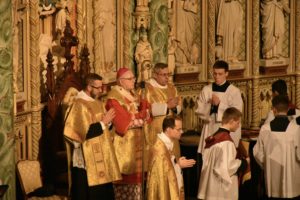
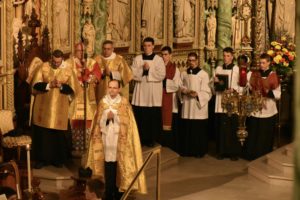
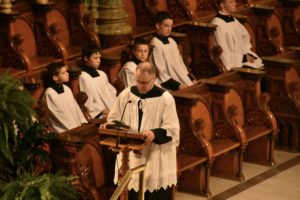
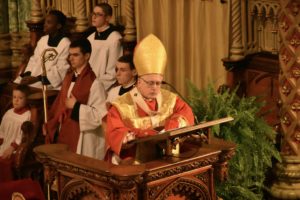
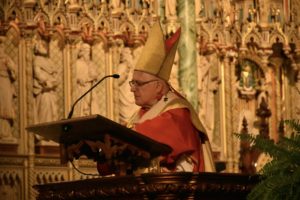
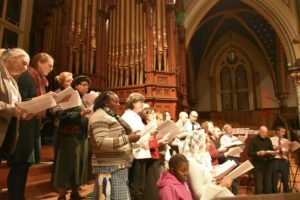
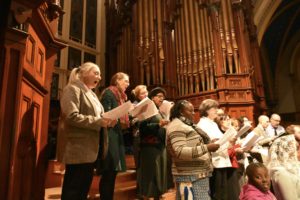
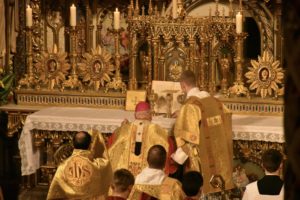



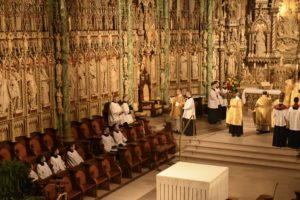
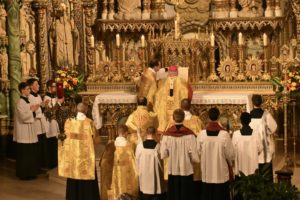
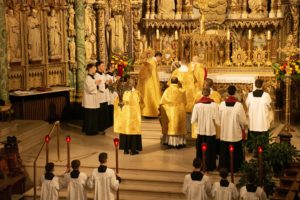
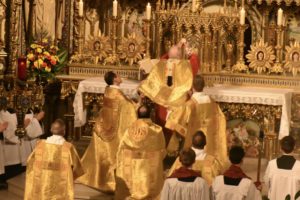
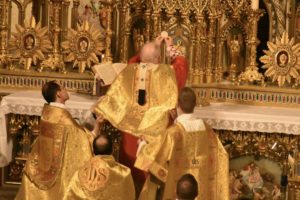
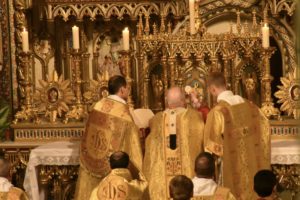
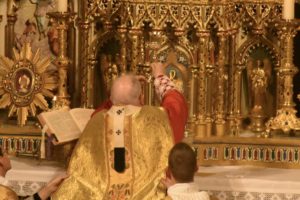
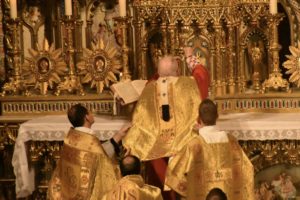
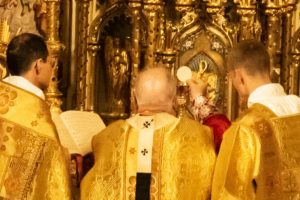
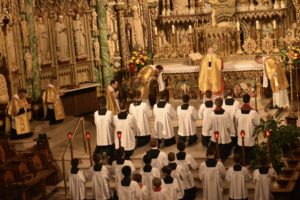
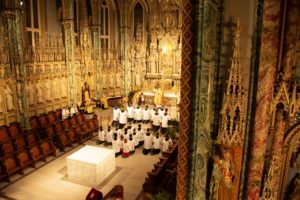
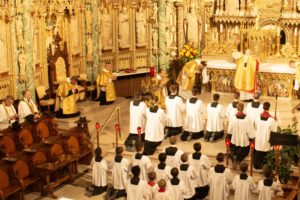

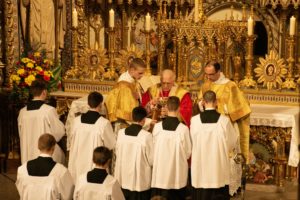
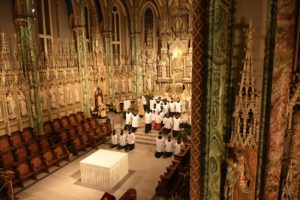
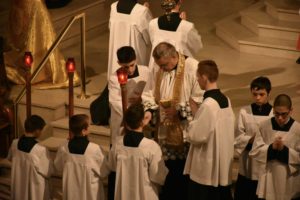
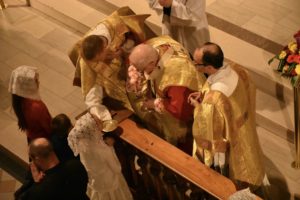
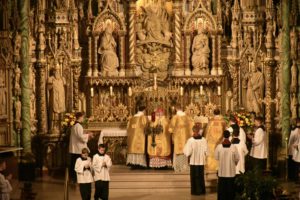
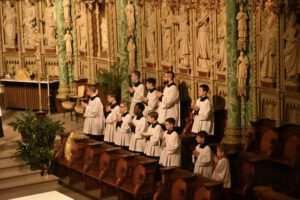
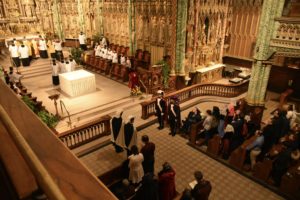

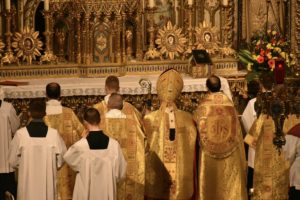
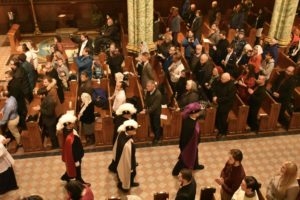

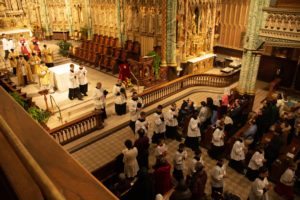
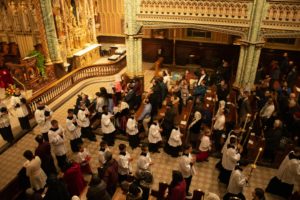


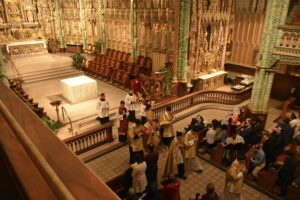
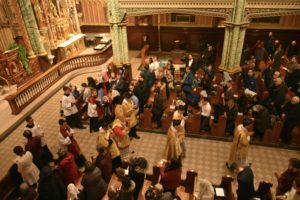

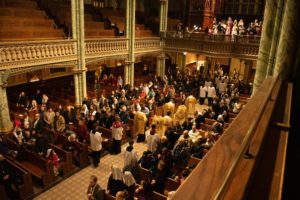
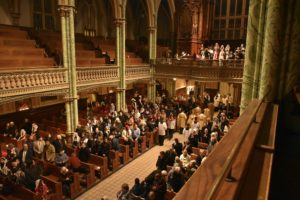
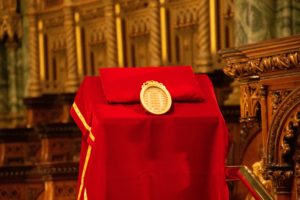
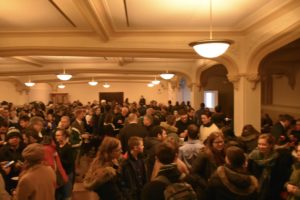
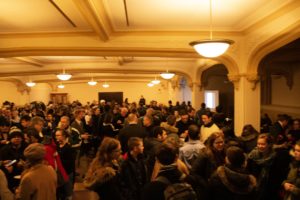
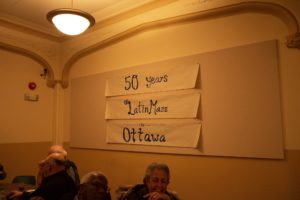
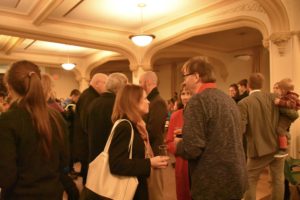
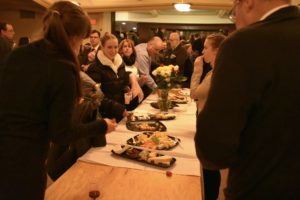


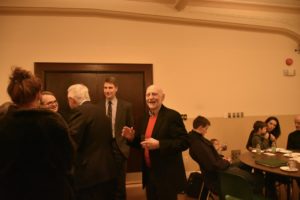
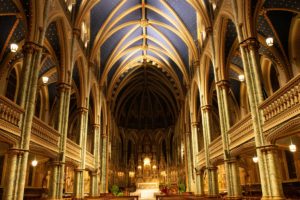
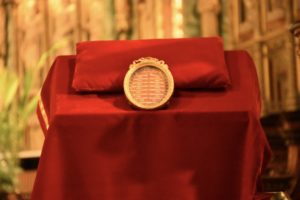
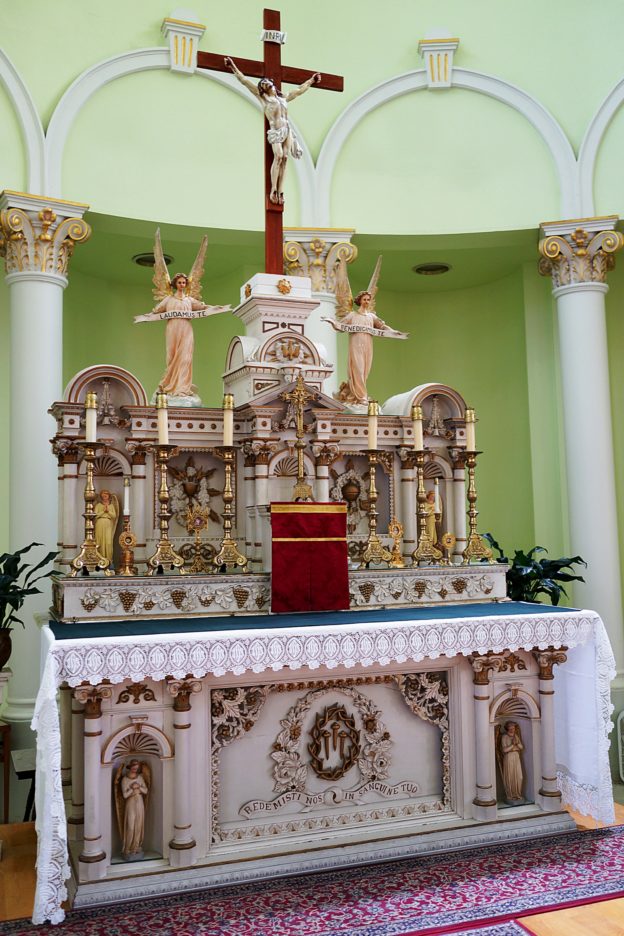
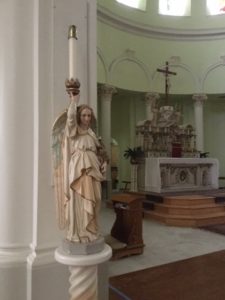
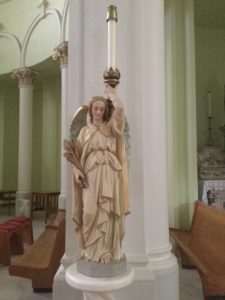
In what is surely a providential gesture, two statues of the guardian angels which originally stood sentry to the high altar in the former Monastery of the Precious Blood on Echo Drive have at long last been reunited with their charge as the result of a very generous gift made to the parish during its 50th anniversary year.
The angels have been reunited with the high altar thanks to the generosity of Darlene Lagasse and Denis Orbay, members of the Saint Clement Union of the Precious Blood.
When the Sisters Adorers were constrained in 1984 to bring their sanctuary into line with post-conciliar norms, the statues of the two angels, part of a larger company which had adorned the monastery chapel since 1923, were taken over by the Union of the Precious Blood. It was also at that time that Ottawa’s Latin Congregation assumed custody of the monastery’s three altars. Both angels and high altar remained separated for 34 years until this July 1st, feast of the Precious Blood, when they were at last once more brought together.
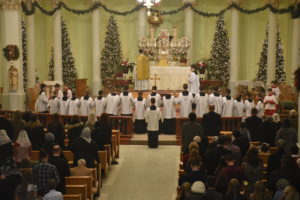

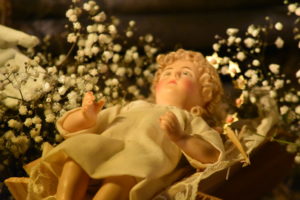
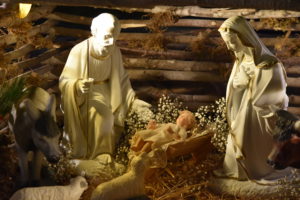

Saint Anne’s stain glass windows were purchased in 1908 from N.T. Lyon of Toronto. The stain glass window illustrating Our Lady’s visit to her cousin Elizabeth has undergone repairs and restoration. Due to water infiltration over the course of the years, the wooden casement of the window on the East side of the nave suffered rot and required attention. Northern Art Glass of Ottawa was entrusted with the project which included the cleaning, re-leading and replacement of missing glass pieces where necessary as well as the provision of adequate ventilation when the window was returned to its place. This was something of a test run for similar work which will need to be carried out on a number of other windows in the church. Donations are welcome toward their eventual restoration !


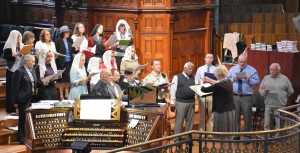
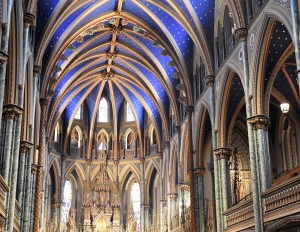
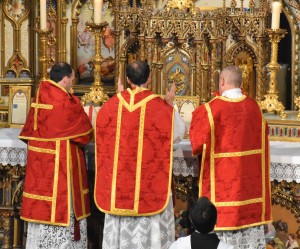
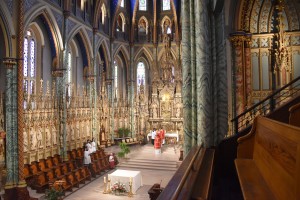
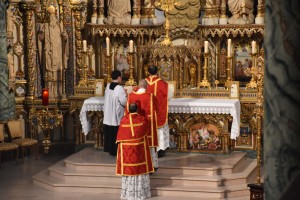
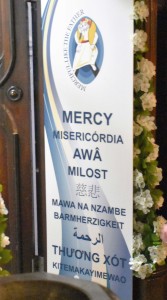
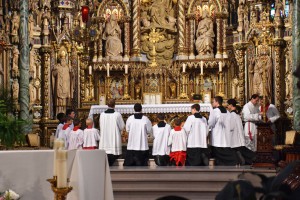
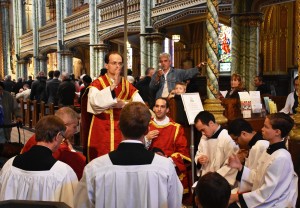
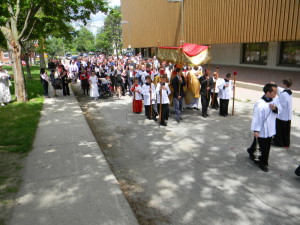
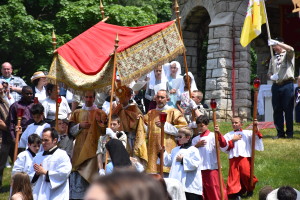
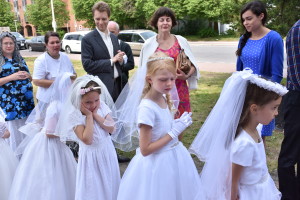
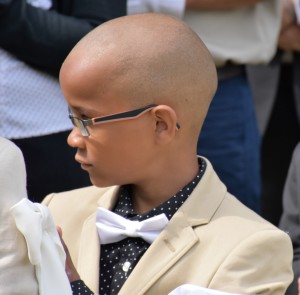



Note to parents:
If you would like a copy of all the pictures taken (over 400), please bring a blank memory stick or DVD disk to Mass next Sunday. I will bring them back a week later.
